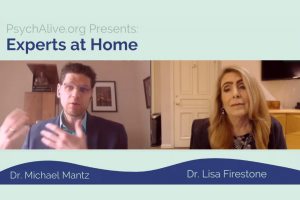As Iraq Ends, a New Battle with PTSD Begins

Following Obama’s recent announcement that all U.S. Troops will be brought home from Iraq by the end of the year, one can’t help but wonder about the emotional trauma that will follow many of these soldiers home.
Studies show that between 11 to 20 percent of veterans from the Iraq and Afghanistan wars will be diagnosed with Post-Traumatic Stress Disorder. People who suffer from PTSD, whether it be from wartime trauma, or natural disasters, are often thrown into an altered mental state that leaves them with overwhelming feelings of dread, lacking trust in the world around them and feeling an increased sense of isolation from their loved ones. PTSD can be a dark and difficult struggle, and many researchers blame PTSD for the rise in military suicide over the last five years. However, an optimistic, new approach to treating PTSD by building resilience and breaking the destructive thought patterns that keep traumatized individuals stuck may provide a beacon of hope for the thousands of soldiers who will return home this winter.
Donald Meichenbaum, Ph.D., who has written extensively about “Resilience Building” as a means to prevent and treat PTSD, defines resilience as the ability to “bounce back,” to “continue forward and maintain equilibrium in the face of chronic adversity.” Individuals possess varying degrees of resilience, which is why not everyone who experiences a traumatic event will develop PTSD. In fact, studies show that the maximum number of people to develop PTSD from a traumatic event does not rise over 30 percent regardless of the event’s severity. Individuals who experienced early childhood traumas or have less reliance are much more likely to develop PTSD.
When an individual develops PTSD, they tend to feel stuck and engage in behaviors that drag them deeper into depression rather than helping them actively fight against it. Traumatized individuals have a tendency to withdraw from the world in general and social activities in particular. However, this type of social isolation only increases the negative thoughts, emotions, and behaviors that accompany the condition. In fact, social support systems are a key component for anyone hoping to overcome Post-Traumatic Stress. When isolated the critical inner voice takes more control over the person’s life.
Individuals suffering from PTSD often engage in “Thinking Traps.” Meichenbaum describes how the “failure to believe anything positive could result from trauma experience” often lures individuals into an almost constant state of victimization. Engaging in “Why me” and “If only” thinking only furthers the emotional distance between traumatized people and others. Similarly, replaying events and brooding on one’s losses leaves many people with PTSD feeling stuck. These “Thinking Traps” are an example of what Dr. Robert Firestone would call the “critical inner voice.”
The critical inner voice is an inner-dialogue of thoughts that are destructive toward ourselves and others. These “voices” not only tell us things that damage our confidence and sense of self, they also feed us negative information about the world around us. All of us are plagued by this critical inner-voice, and when people suffer from PTSD they are not just suffering as a result of the traumatic event itself but they are also suffering from what they continually tell themselves about the event. For example, someone who experienced a sudden catastrophic event may experience thoughts like, “The world is just an unsafe place, you really can’t trust anyone,” which then keeps them from investing in the future. Even in dramatic cases where someone is left physically disfigured, the critical voices they have about their condition only serve to make them feel worse and keep them stuck in a negative mental spiral.
The old adage that “Time heals all wounds” is not accurate when it comes to Post-Traumatic Stress Disorder. On the contrary, suppressing trauma-related feelings can actually intensify the emotions, making them more overwhelming and scary. Whereas creating a coherent narrative about the event that originally caused the trauma can be a source of healing. By retelling one’s story with an emphasis on how they were able to get through the difficult situation, focusing on primary emotions without feeding the overwhelming feelings that followed, individuals can begin to demystify the source of their trauma and eventually make meaning out of the situation.
In doing therapy or talking with a loved who has experienced a trauma, it is helpful to re-conceptualize the problem in positive terms. Rather than focusing on the obvious negatives associated with the trauma it is important to emphasize that this person was able to get through the traumatic situation. This can be done by pointing out strengths in their lives and discussing specific times where they overcame adversity. By challenging the critical inner voice and reframing their experience in terms that give the traumatized person a sense of their personal power, they can begin to have confidence again in themselves and the world around them. In Conquer Your Critical Inner Voice, a book I co-authored with Dr. Robert Firestone and Joyce Catlett, could be a first step in identifying and overcoming the critical inner voices that keep people stuck in a negative state of mind.
In order to fully recover from PTSD it is important for individuals to seek help and develop a sense of resilience. Breaking the patterns of self-destructive thoughts and behaviors can help people get unstuck. Similarly, taking care of one’s physical well-being by remaining active and not engaging in substance abuse is an important aspect of recovery. Making action-oriented plans and accomplishing tasks can help people get their confidence back to slowly reinvest in their future.
Although, it is not always easy, there is a life after PTSD. Developing resilience can truly break the internal cycle that leaves so many individuals chronically stuck in a traumatized state. My hope is that the 40,000 men and women who will be returning home from Iraq in the next few months will be greeted with these tools to combat the emotional wounds of battle.
Learn more about treating PTSD in an our CE webinar with Dr. Donald Meichenbaum and Dr. Lisa Firestone, Treatment of Individuals with PTSD, Complex PTSD and Comorbid Disorders: A Life-Span Approach.
Tags: Dr. Don Meichenbaum, emotional resilience, iraq war, PTSD, stress, stress counseling, trauma, Veterans, war









Leave a Reply